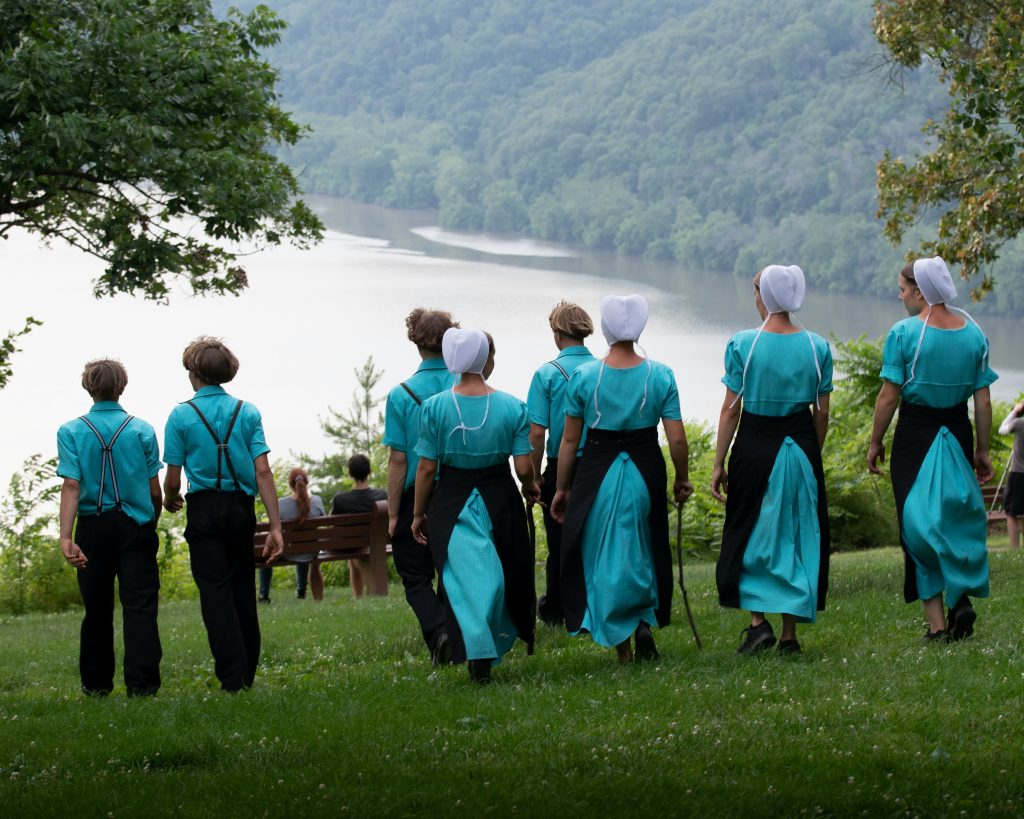When I was young, bed courtship was practiced in my community. This meant that a young man would ask a young woman for a date, drive her to her home, put up his horse, and find his way to her upstairs bedroom where he would remove his hat, shoes, and outer shirt. It was acceptable to kiss and hug and neck, called schmunzling, but they were not supposed to have intercourse.
Back in the old country it was called “bundling.” Reportedly, when our Anabaptist ancestors in Switzerland and Germany were hiding from authorities, they hid in the upstairs rooms of their homes during their dates. There would be a board down the middle of the bed to keep the man and woman separated. This left them together in a warm place to visit without getting them into carnal trouble.
In the pioneer days when many of the Amish communities were being established here in this country, sleeping spaces were not nearly as private as they tend to be in the present day. In fact, in stagecoach inns (not only Amish), it was common for innkeepers to sell half a bed. So in the middle of the night, a person might find himself sleeping next to a total stranger.
Bed courtship is not practiced in every Amish community. Many new communities are established expressly so that they can get away from it. I suspect some communities don’t admit that they still practice it, especially those that were established back when the practice was common.
Needless to say, bed courtship often leads to pregnancy before marriage. I believe most Amish elders would rather a young woman become pregnant before marriage than leave the community. After all, there are ways of “remedying” the situation of pregnancy before marriage, including planning a hasty wedding before the pregnancy shows. Such a remedy traps her in marriage.
If both partners are members of the church, they plan their wedding to take place before the pregnancy becomes obvious. If one or both of them are not yet members of the church, they have to act quickly to become members before they can get married. Becoming a member normally takes from spring to fall. First the youth need to take instructions to join the church and become baptized. Church is held every two weeks in each district. The youth take a summer of instruction before they are baptized. If a young woman gets pregnant before she (or her partner) is a member of the church, this process must be accelerated. They will need to take instructions in their own church district on their usual church Sundays, in addition to a neighboring church district on alternate Sundays. This way a person can get through the process in half the time it normally takes.
Even if a woman doesn’t become pregnant and a couple decides they want to get married, they have to go before the elders of the church to ask permission. Though I never experienced this myself, reportedly when young people ask permission for marriage, they are admonished by the church elders that the flesh is weak and are asked if they have stayed “free of sin” during their courtship. If they have not, they are asked to make a public confession before they are granted permission to marry.
These practices puzzle me. If the “flesh is weak,” then why tempt it by allowing two young people to go to bed together? And why the hands-off approach until someone gets pregnant or asks for permission to marry, and then bring on the public shaming rituals? This system seems designed to keep the youth in the community.
In both Liberating Lomie and Bonnet Strings, I write about my experiences with bed courtship, and how “hazardous” I found it to be.



Such a conflicted practice. Is abortion common and is it seem as acceptable? I’d imagine not, but wonder.
Abortion was so unheard of when I was living in the community as to barely be mentioned. So it was neither common nor acceptable. Whether that has changed in the years since I’ve left, I don’t know. I would doubt it, but a lot happens that no one knows about.
Thanks, Kathie, for your question.
You donated a stunning braided rug which I bought today at the MCC relief sale. Could you contact me to answer a question I have? Thanks
I’m familiar with bundling from reading Lawrence Stone’s book “The Family, Sex & Marriage in England 1500-1800”, and if I remember correctly he writes that to some extent a pregnancy wasn’t seen as all that bad because it confirmed the couple’s fertility before the irrevocable step of marriage.
The admonition you mention does seem somewhat in conflict, and I’m not sure anything similar took place in Tudor England, but perhaps is just another way to exercise control, by making the young couple feel bad/ashamed.
And I’m sure if the girls got pregnant they’d be asked “Why did you LET that happen?” as your mother did to you.